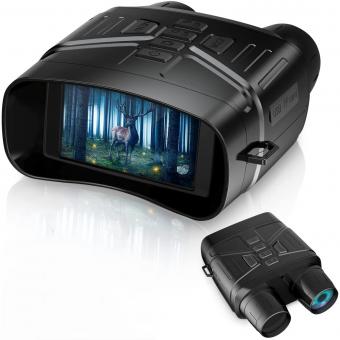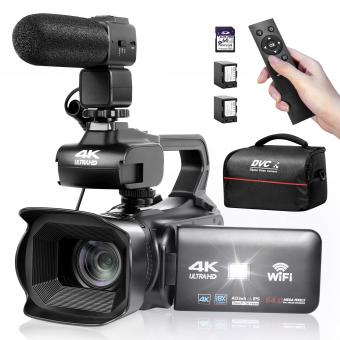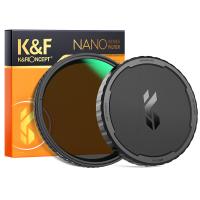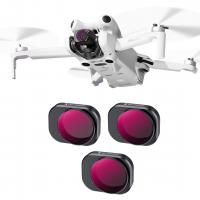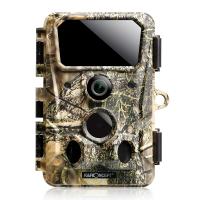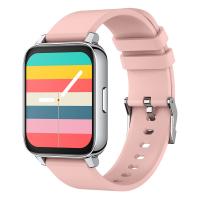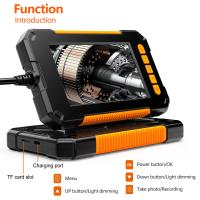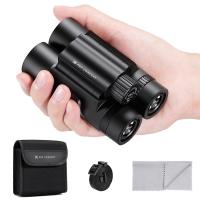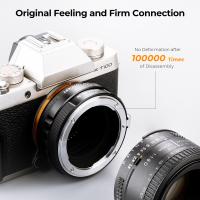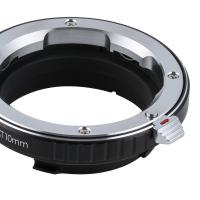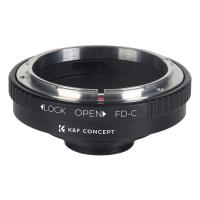What Is A Digital Video Camera ?
A digital video camera is an electronic device that captures and records video footage in a digital format. Unlike traditional analog cameras, digital video cameras use digital technology to convert the light and sound signals into digital data that can be stored on memory cards or hard drives. Digital video cameras come in a variety of sizes and shapes, from handheld camcorders to professional-grade cameras used in the film and television industry. They typically feature high-resolution sensors, advanced autofocus systems, and image stabilization technology to produce high-quality video footage. Many digital video cameras also offer additional features such as built-in microphones, manual controls, and interchangeable lenses to give users greater creative control over their recordings.
1、 Sensor technology
A digital video camera is a device that captures and records video footage in a digital format. It uses advanced sensor technology to convert light into digital signals, which are then processed and stored on a memory card or other storage device. The sensor technology used in digital video cameras has evolved significantly over the years, resulting in improved image quality, faster processing speeds, and greater sensitivity to light.
The latest advancements in sensor technology have led to the development of high-resolution cameras that can capture stunningly detailed footage even in low-light conditions. These cameras use larger sensors and advanced noise reduction algorithms to minimize image noise and produce clearer, more vibrant images. Additionally, many modern digital video cameras are equipped with advanced autofocus systems that can track moving subjects and maintain sharp focus throughout the shot.
Another recent development in digital video camera technology is the integration of artificial intelligence (AI) and machine learning algorithms. These technologies can analyze the scene being captured and adjust camera settings in real-time to optimize image quality. For example, an AI-powered camera might automatically adjust exposure settings to compensate for changes in lighting conditions, or use facial recognition to keep a subject in focus as they move around the frame.
Overall, digital video cameras are an essential tool for capturing high-quality video footage in a wide range of settings. With the latest advancements in sensor technology and AI, these cameras are becoming more powerful and versatile than ever before.

2、 Image stabilization
A digital video camera is a device that captures and records video footage in a digital format. It is a modern version of the traditional analog video camera, which used magnetic tapes to store the recorded footage. Digital video cameras use memory cards or internal storage to store the recorded footage, making it easier to transfer and edit the footage on a computer.
One of the latest features of digital video cameras is image stabilization. Image stabilization is a technology that helps to reduce camera shake and produce smoother, more stable footage. It is particularly useful when shooting handheld footage or when filming in unstable environments.
There are two types of image stabilization: optical and digital. Optical image stabilization uses a lens element that moves to compensate for camera shake, while digital image stabilization uses software to crop and stabilize the footage. Optical image stabilization is generally considered to be more effective, but digital image stabilization can be useful in situations where optical stabilization is not available.
In recent years, image stabilization technology has become more advanced, with some cameras offering 5-axis stabilization that compensates for movement in multiple directions. This technology has made it easier for filmmakers and videographers to capture smooth, stable footage without the need for additional equipment such as tripods or stabilizers.
Overall, image stabilization is a valuable feature of digital video cameras that can help to improve the quality of footage and make it easier to capture stable, professional-looking videos.

3、 Lens quality
What is a digital video camera?
A digital video camera is a device that captures and records video footage in a digital format. It is a modern version of the traditional analog video camera, which used magnetic tapes to store the recorded footage. Digital video cameras use memory cards or internal storage to store the recorded footage, making it easier to transfer and edit the footage.
Digital video cameras come in various shapes and sizes, from small handheld devices to larger professional-grade cameras. They also come with different features and specifications, such as resolution, frame rate, and zoom capabilities.
One of the most important aspects of a digital video camera is its lens quality. The lens determines the clarity and sharpness of the footage, as well as the depth of field and the ability to capture low-light scenes. The quality of the lens is determined by factors such as the number of elements, the aperture size, and the coating on the lens.
In recent years, there has been a trend towards using larger sensors in digital video cameras, which can improve the image quality and allow for better low-light performance. Additionally, some cameras now come with built-in stabilization technology, which can help to reduce camera shake and produce smoother footage.
Overall, the quality of a digital video camera's lens is crucial in determining the quality of the footage it produces. As technology continues to advance, we can expect to see further improvements in lens quality and other aspects of digital video cameras.

4、 Recording format
A digital video camera is a device that captures and records video footage in a digital format. Unlike traditional analog cameras, digital video cameras use digital technology to capture and store video data. This allows for higher quality video and easier editing and sharing of footage.
Digital video cameras come in a variety of shapes and sizes, from handheld camcorders to professional-grade cinema cameras. They typically use a variety of sensors and lenses to capture high-quality video, and may include features such as image stabilization, autofocus, and manual controls for exposure and focus.
One of the key advantages of digital video cameras is their ability to record in a variety of formats. Common recording formats include MPEG-4, AVCHD, and H.264, each with its own advantages and disadvantages. Some cameras may also offer RAW recording, which captures uncompressed video data for maximum flexibility in post-production.
In recent years, digital video cameras have become increasingly popular for a variety of applications, from amateur filmmaking to professional broadcast and streaming. The latest cameras offer high-resolution video, advanced features such as HDR and high frame rates, and seamless integration with editing and sharing software.
Overall, a digital video camera is an essential tool for anyone looking to capture high-quality video footage in a digital format. With the latest technology and features, these cameras offer unparalleled flexibility and creative potential for filmmakers and videographers of all levels.







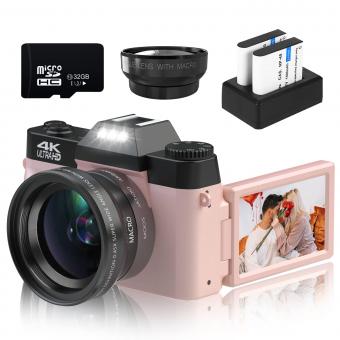
![4K digital camera for photography and video [autofocus and stabilisation] 48 MP video blog camera with SD card, 3 4K digital camera for photography and video [autofocus and stabilisation] 48 MP video blog camera with SD card, 3](https://img.kentfaith.de/cache/catalog/products/de/GW41.0065/GW41.0065-1-340x340.jpg)








